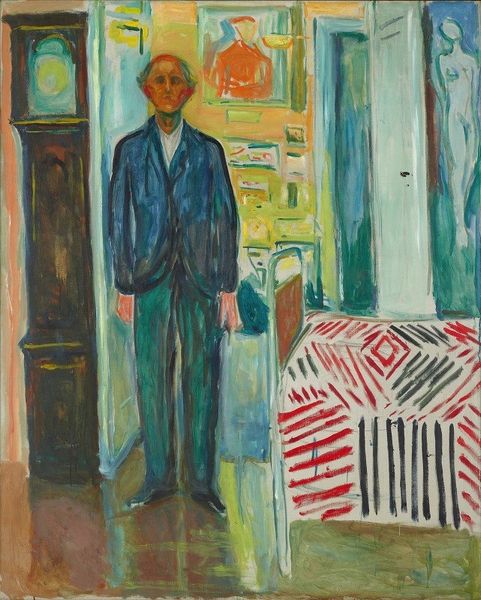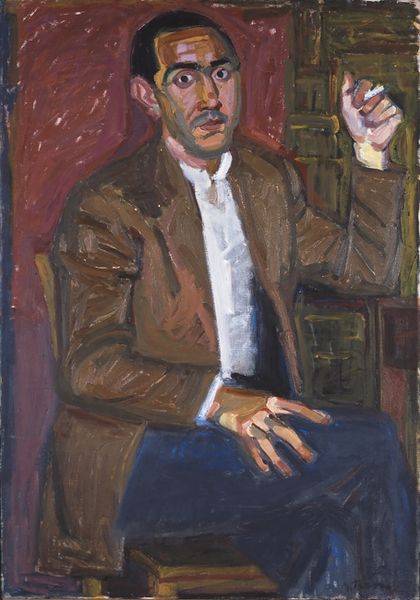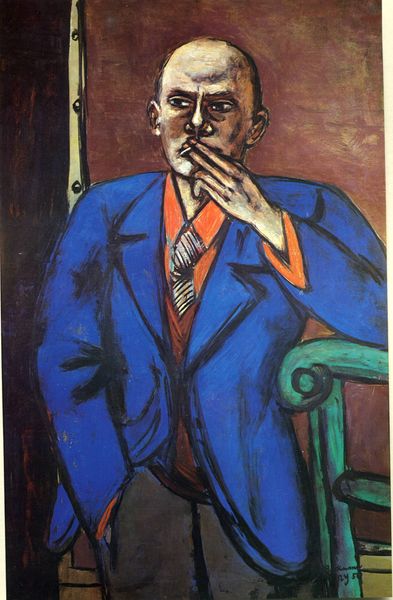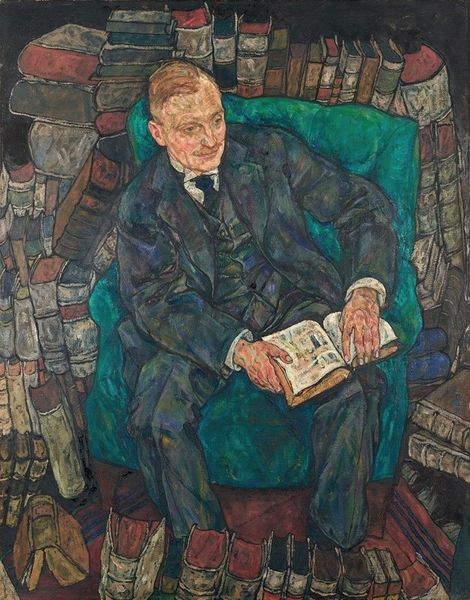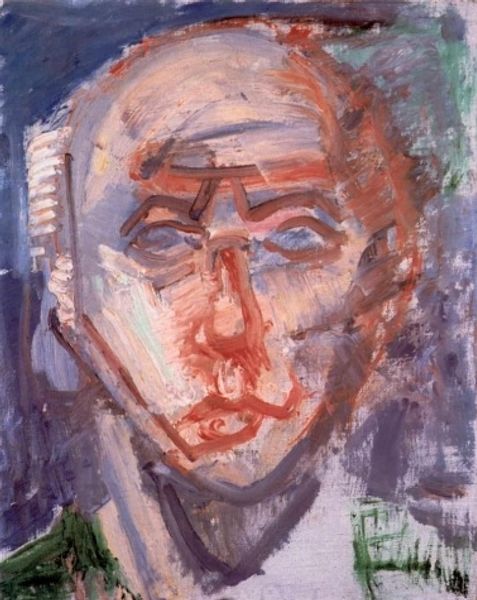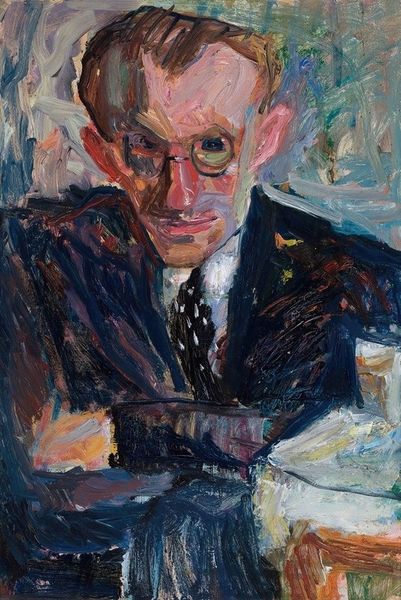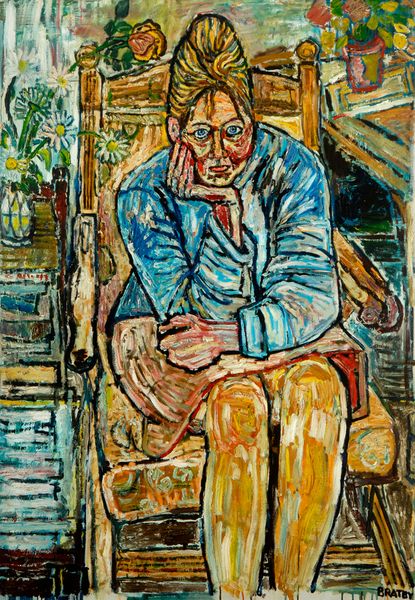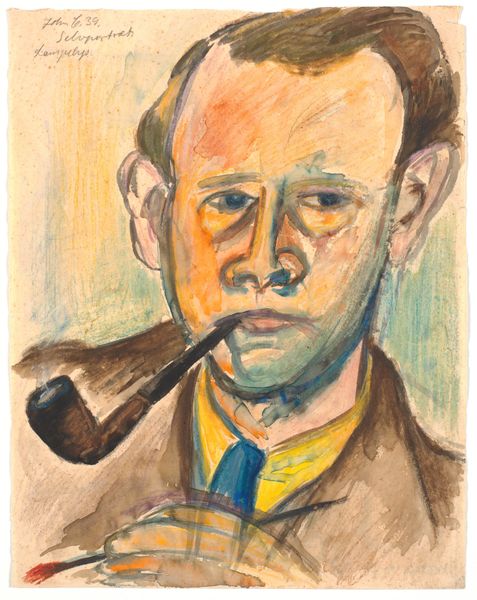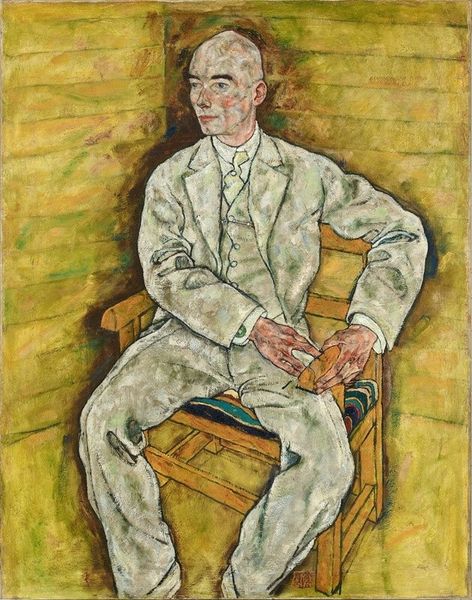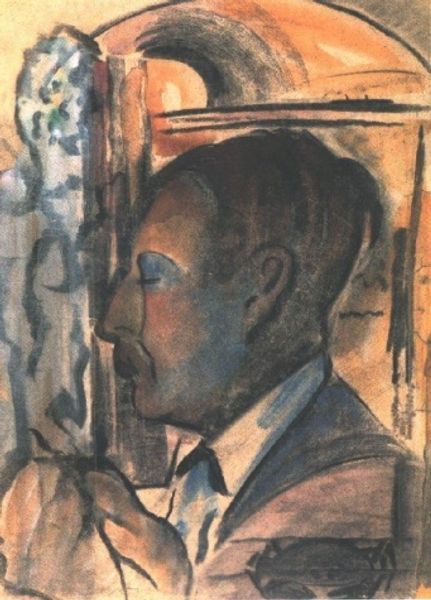
painting, oil-paint
#
portrait
#
painting
#
oil-paint
#
figuration
#
oil painting
#
expressionism
#
portrait art
#
modernism
Dimensions: 121 x 90 cm
Copyright: Public Domain
Curator: Here we have Ernst Ludwig Kirchner’s "Portrait of Dr. Carl Hagemann," created between 1928 and 1933. The oil painting is a fascinating example of Kirchner's later portraiture style. Editor: It’s… jarring, isn't it? The color palette is so unexpected—a pink face against those cool greens and blues. It feels unsettling. Curator: Kirchner’s expressionist style, even in his portraits, often leaned into capturing emotional intensity rather than mere likeness. Dr. Hagemann, an important figure in supporting Kirchner's work, is presented here less as an individual and more as a representation of the intellectual class of Weimar Germany. Editor: Yes, and those geometric patterns within his suit and in the background... it’s as if the societal structures themselves are pressing in on him. The figure seems trapped, almost suffocated, by the patterns. It speaks to the societal anxieties of the time, doesn't it? Curator: Exactly! The composition reflects the increasing social and political fragmentation that marked the end of the Weimar Republic. The angular forms and conflicting colors create a sense of unease. Editor: I can’t help but think about Kirchner’s own struggles with mental health, too. Was it painted before or after the artist volunteered to serve in the military during WWI? Curator: Actually, the painting came much later. But yes, this portrait, although created after Kirchner relocated to Switzerland, seems to carry echoes of the trauma of World War I and his later battles with mental health. The jarring palette might be considered his perspective on German society, tinged by conflict, and personal experiences. Editor: And what about Hagemann himself? To what degree was he a target of the portrait's representation of societal ills? Curator: That is a nuanced point. While Kirchner respected Hagemann greatly as a patron and friend, it is plausible he was also including his representation of establishment in a social critique, a perspective filtered, yes, through the artist's personal pain and disillusionment. It brings the viewer into contemplation about power dynamics and personal connection in art. Editor: It’s a powerful piece, one that forces us to confront the complexities of art, patronage, and the weight of history. Curator: It does invite deeper understanding and an openness about not just the period but the emotional toll endured and its repercussions in artwork for generations.
Comments
stadelmuseum almost 2 years ago
⋮
Carl Hagemann was Ernst Ludwig Kirchner’s most important patron and collector. In 1928, he visited the artist in Davos and sat for him on one of his self-carved chairs. Kirchner worked on this painting for several years. He finally finished it in 1932 and then gave it to Hagemann as a token of friendship. The work vividly shows that, in the early 1920s, Kirchner turned away from the emotional expressiveness of his Brücke years: he emphasised the lines, applied the colours as large cohesive sections and reproduced spatial structures two-dimensionally. Accordingly, he merged the doorway on the left with both a shelf and the carpet in the foreground to form a sort of mosaic. He described this change in his creative expression as his “new style”.
Join the conversation
Join millions of artists and users on Artera today and experience the ultimate creative platform.
